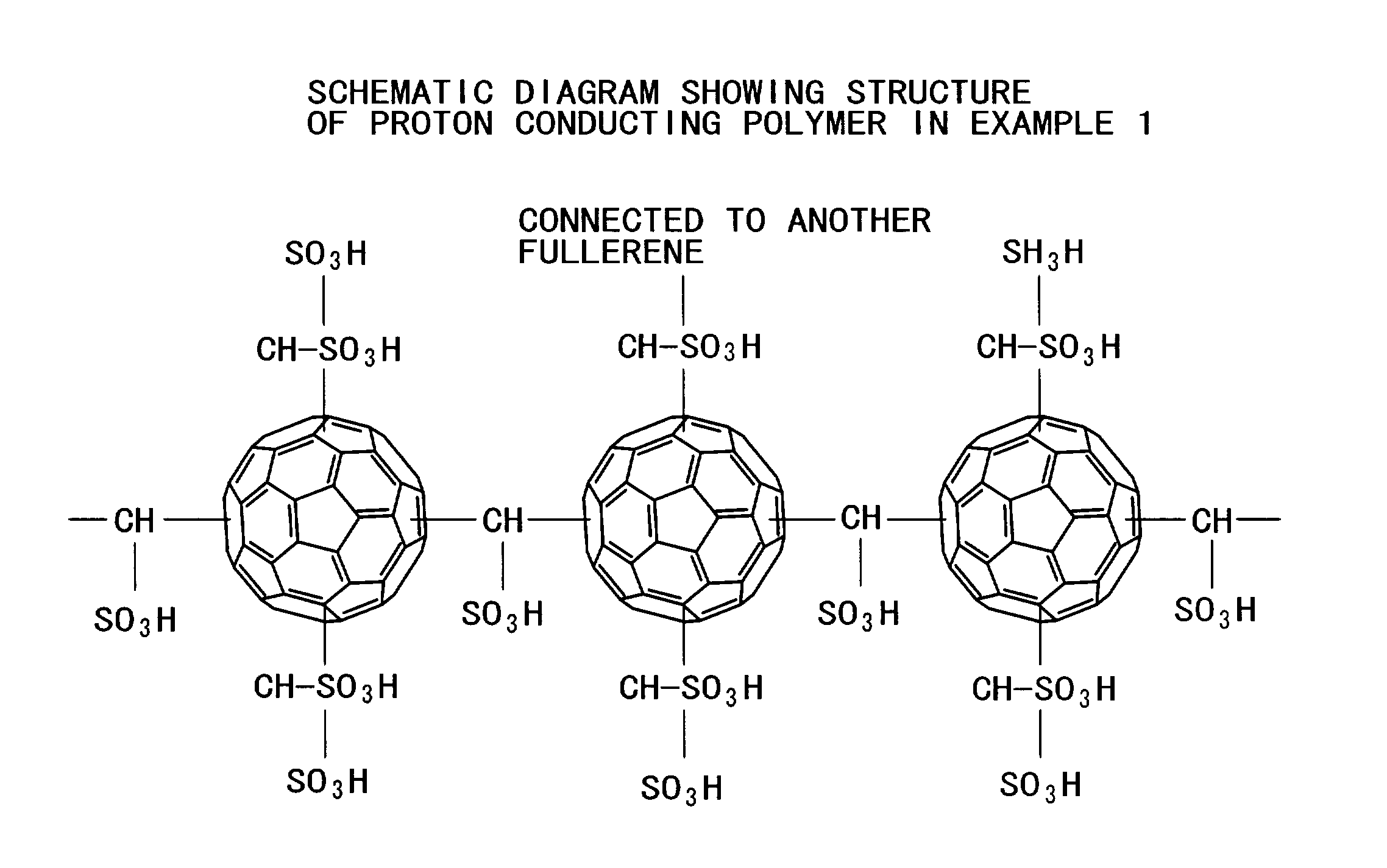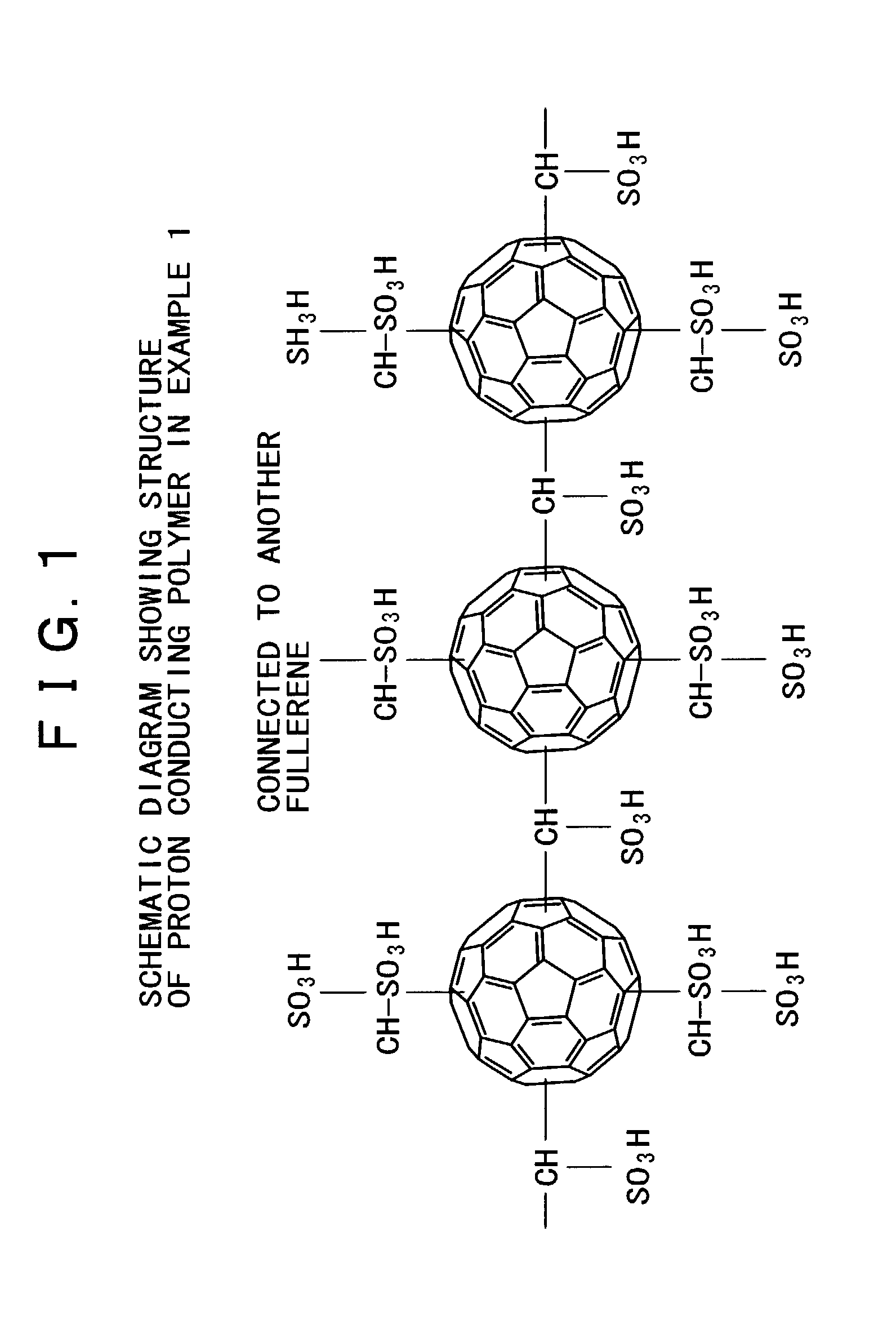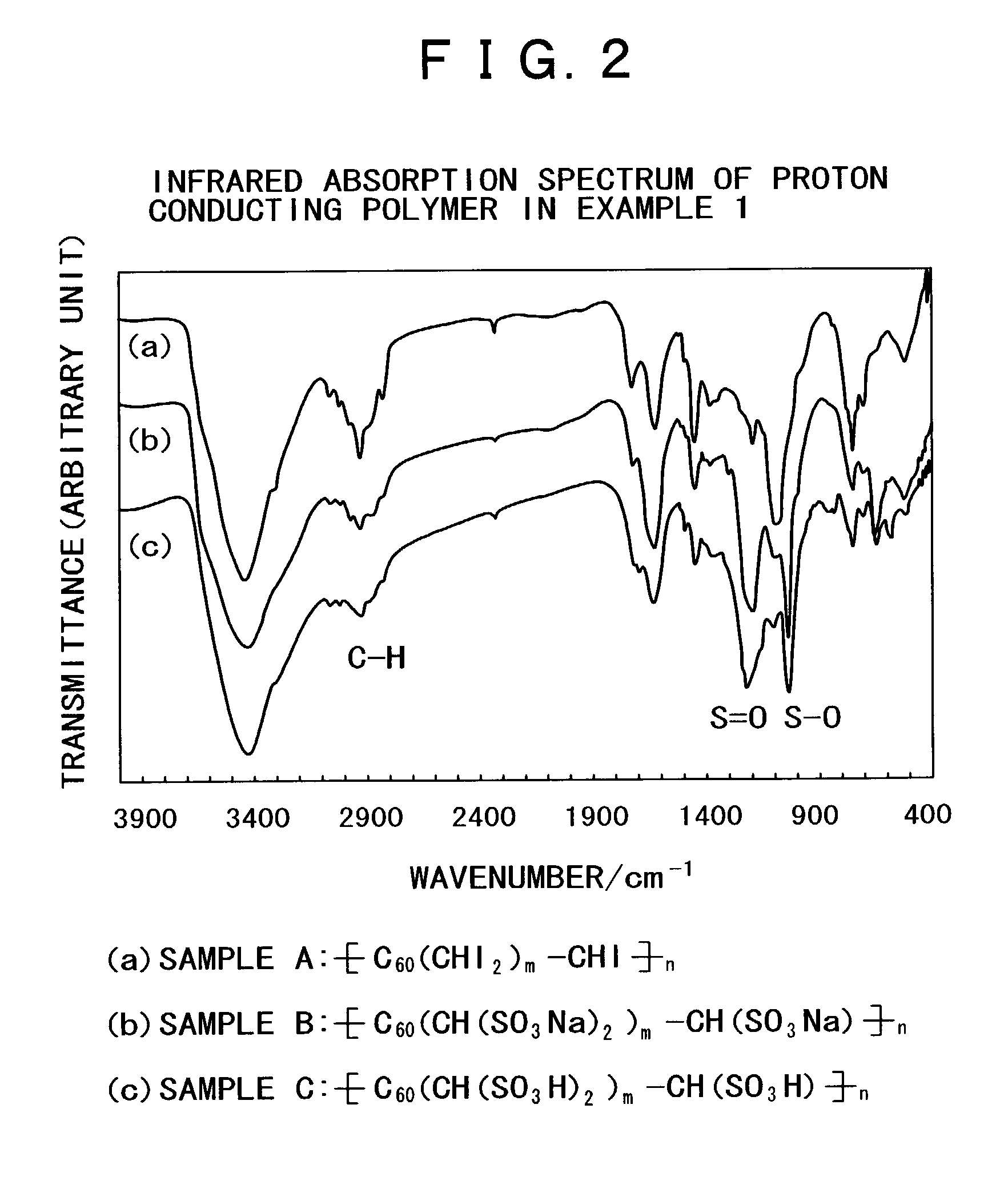Ionic conductor, process for production thereof, and electrochemical device
a technology of ionic conductors and electrochemical devices, applied in the field of ionic conductors, can solve the problems of high installation cost and operating cost, fuel cells are limited in the range of operating temperature, complex and large, etc., and achieve the effects of less soluble in water, less ionization, and easy production
- Summary
- Abstract
- Description
- Claims
- Application Information
AI Technical Summary
Benefits of technology
Problems solved by technology
Method used
Image
Examples
example 1
[0084](Polymer of fullerene as a proton conductor and a process for production thereof)
[0085]The following describes the synthesis and structure of a polymer of fullerene as a proton conductor containing fullerene in the polymer main chain, along with the measurement of particle diameter and proton conductivity.
Synthesis of Polymer as a Proton Conductor
[0086]A polymer of fullerene as a proton conductor was synthesized in the following manner from C60 fullerene (as carbon clusters), I(CH2)kI (as connecting molecules), and sulfonic acid groups (as ion dissociating functional groups).
[0087]The connecting molecule I(CH2)kI combines with a C60 fullerene through one of its two iodine atoms as follows.
C60+I—(CH2)k—I→C60—(CH2)k—I
[0088]The residue (—(CH2)k—I) of the connecting molecule combines with another C60 fullerene through its remaining iodine atom to form a molecular chain as the polymer skeleton includes two fullerenes joining to each other through a methylene chain.
C60—(CH2)k—I+C60→...
examples 2 to 9
[0116](Various polymers of fullerene as a proton conductor and their ionic conductivity)
[0117]The following describes the synthesis of a polymer of fullerene as a proton conductor containing fullerene in the polymer side chains, along with the measurement of their ionic conductivity.
example 2
[0118]A styrene-sulfonated azahomofullarenostyrene copolymer was synthesized according to the following reaction flow diagram.
[0119]
[0120]In 100 mL of tetrahydrofuran was dissolved 0.5 g of styrene-p-(chloromethyl)styrene copolymer having a molecular weight of 46200 (in which p-(chloromethyl)styrene accounts for 18.2 mol %). To the resulting solution was added 0.29 g of sodium azide. After stirring for one day, the resulting styrene-p-(azidemethyl)styrene copolymer (0.45 g) was extracted with tetrahydrofuran.
[0121]The styrene-p-(azidemethyl)styrene copolymer (0.4 g) was dissolved in 100 mL of chlorobenzene. This solution was added dropwise with stirring to 300 mL of chlorobenzene solution containing 2.5 g of fullerene. With vapor refluxed, the solution was heated at 140° C. (boiling point) for 16 hours. The reaction was suspended when the peak (at 2095 cm−1) due to azide groups disappeared in the infrared spectrum. The reaction product was separated from unreacted fullerene by disso...
PUM
| Property | Measurement | Unit |
|---|---|---|
| Percent by mass | aaaaa | aaaaa |
| Length | aaaaa | aaaaa |
| Length | aaaaa | aaaaa |
Abstract
Description
Claims
Application Information
 Login to View More
Login to View More - R&D Engineer
- R&D Manager
- IP Professional
- Industry Leading Data Capabilities
- Powerful AI technology
- Patent DNA Extraction
Browse by: Latest US Patents, China's latest patents, Technical Efficacy Thesaurus, Application Domain, Technology Topic, Popular Technical Reports.
© 2024 PatSnap. All rights reserved.Legal|Privacy policy|Modern Slavery Act Transparency Statement|Sitemap|About US| Contact US: help@patsnap.com










